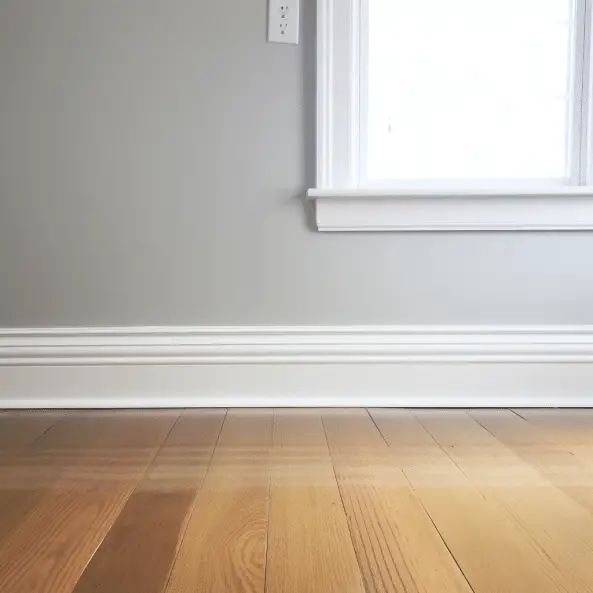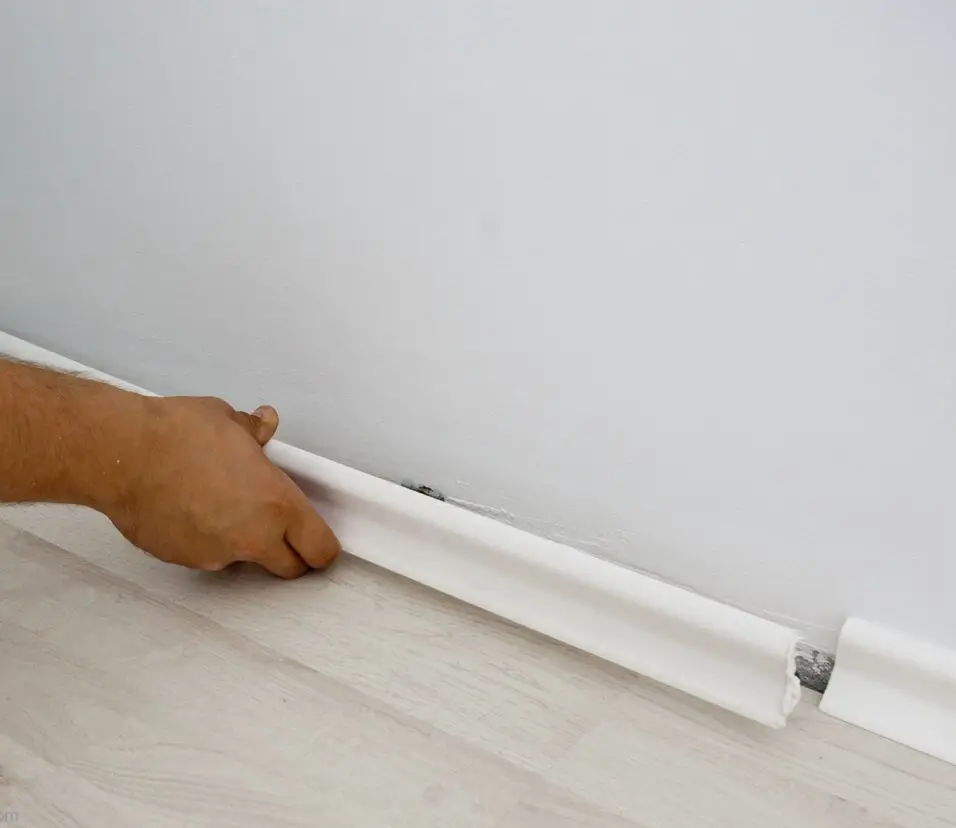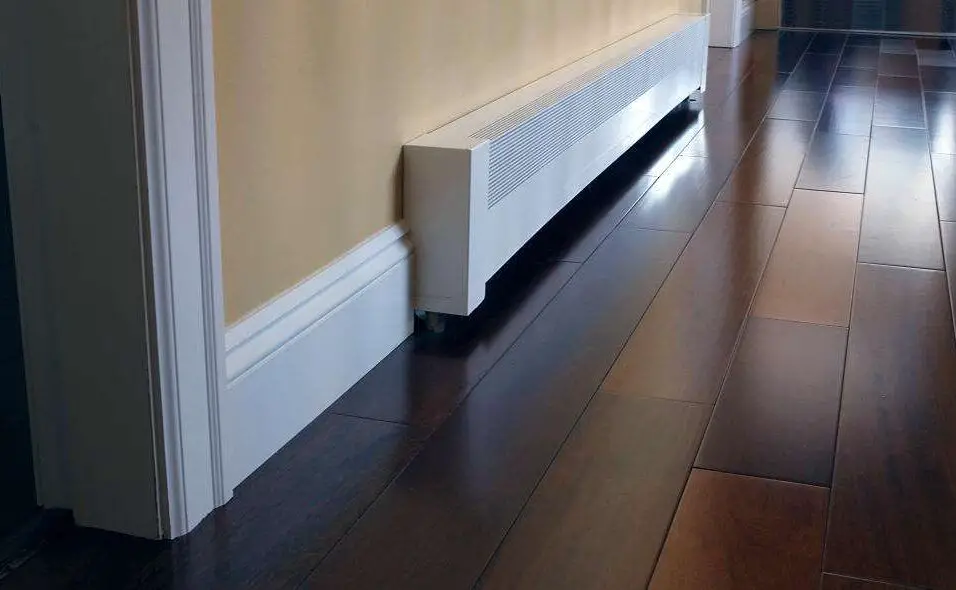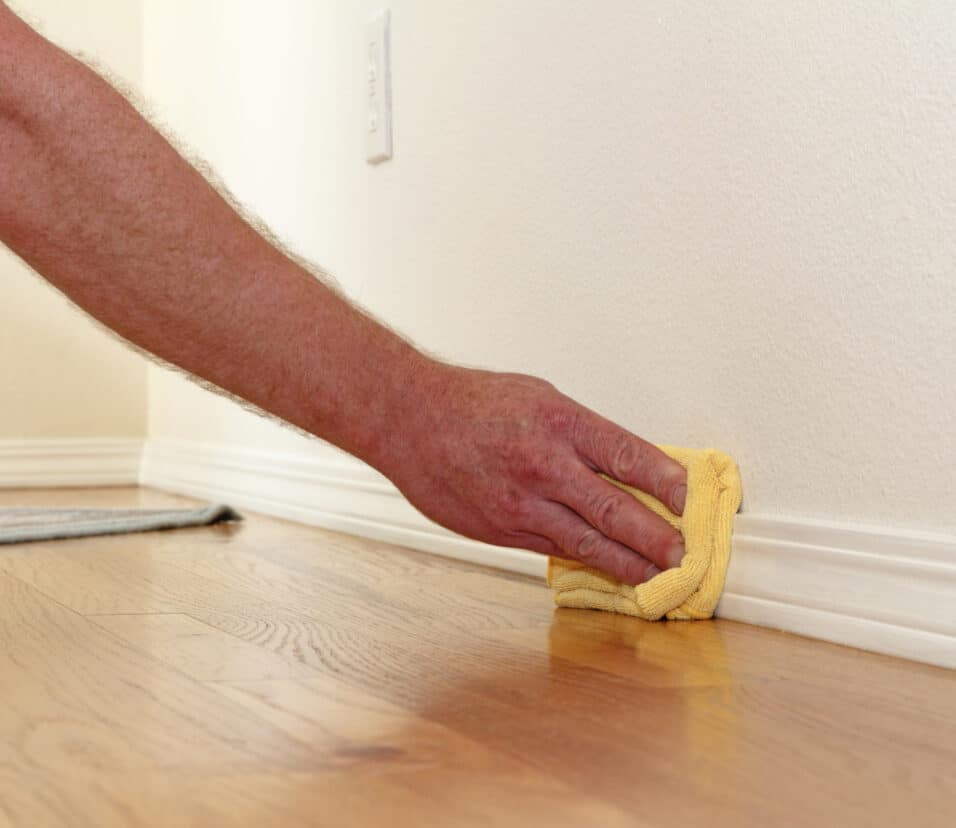How High Should Baseboard Be Off The Floor
Introduction
How High Should Baseboard Be Off The Floor: When it comes to interior design, every detail matters. From the color of the walls to the type of flooring, each element contributes to the overall aesthetic of a space. One often overlooked aspect of interior design is the baseboard. While it may seem like a small detail, the height of the baseboard off the floor can have a significant impact on the look and feel of a room.
Baseboards are the trim that runs along the bottom of the walls, covering the joint between the wall and the floor. They serve both a functional and decorative purpose. Functionally, baseboards protect the walls from damage caused by furniture, vacuum cleaners, and other objects. They also help to hide any gaps or imperfections between the wall and the floor. Decoratively, baseboards can add visual interest and style to a room, enhancing the overall design.
So, how high should caulking baseboards be off the floor. The answer depends on several factors, including the height of the ceiling, the style of the room, and personal preference. In general, baseboards are typically between 3 and 5 inches in height. However, there are no hard and fast rules when it comes to baseboard height. Some people prefer taller baseboards for a more dramatic look, while others opt for shorter baseboards for a more minimalist aesthetic.

Should baseboards be flush with floor?
No gap should occur between the floor and baseboard. Install straight on top. Scribble baseboard or use quarter-round for uneven flooring.
Interior designers use baseboards to finish a room by covering the wall-floor joint. Common questions about installing baseboards include whether they should be flush with the floor. This depends on personal preference, room style, flooring, and aesthetic.
Baseboards flush with the floor give a sleek, seamless look for some. Modern and minimalist designs emphasize simplicity and sleekness, making this appealing. Baseboards flush with the floor eliminate dust and debris buildup in gaps and cracks, making cleaning easier.
Others like a tiny gap between baseboards and floors. This may be for practical reasons like flooring material expansion and contraction. A little gap can create a visual split between the wall and the floor, adding depth and character to the area.
Consider the flooring when considering if baseboards should be flush. To allow for expansion and contraction, hardwood or laminate baseboards should be left a slight space from the floor. This prevents floor warping and buckling.
Personal preference and room style and flooring type determine whether baseboards should be flush with the floor. Both alternatives have pros and cons, so analyze them and pick the one that meets your demands and aesthetic tastes.
Do baseboards go on top of flooring?
Before flooring, baseboards are installed. Install baseboards before carpeting. Hide the edges. Hardwood and laminate flooring are easier to install before trim.
Any interior design needs baseboards. They finish a room and fill the wall-floor gap. Baseboard installation might be confusing—should they go on top of the flooring or before?
Your floor decides the solution. Following flooring, most baseboards are installed. Baseboards hide the flooring-wall expansion gap, creating a smooth, continuous look. After installing the flooring, the baseboards will fit tightly against it, looking professional.
Some baseboards must be installed before flooring. Laminate and vinyl plank floating floors usually do this. Movement requires a room expansion gap on these floors. First, baseboards are erected, then flooring is laid up to them, leaving the space.
Install baseboards slightly above the finished floor before flooring. Flooring can be put to baseboards without gaps or imperfections. Baseboards should be installed before carpet or other tuckable flooring to secure the edges.
Choice of flooring determines baseboard installation. For shine, baseboards are applied after flooring. Some floating floors need baseboards before flooring due to the increasing gap. Baseboards must fit snugly against the floor and finish the room regardless of installation.
What height baseboard for hardwood floors?
Excellent rule of thumb: Baseboards are 3 to 5 inches tall for 8-foot walls and 5 to 7 inches for 10-foot ceilings.
Choosing the proper height baseboard for hardwood floors involves several criteria. Baseboard height affects the room’s aesthetics and functioning. Select a baseboard height that matches your hardwood floors and compliments the room’s appearance.
The style of your hardwood flooring should be considered while choosing baseboard height. If you have traditional or classic hardwood flooring, a taller baseboard may add elegance. If you have modern or contemporary hardwood flooring, a shorter baseboard may be better to preserve a clean, minimalist look.
Ceiling height should also be considered when choosing baseboard height. High ceilings may require a taller baseboard to balance the area. To reduce clutter, a shorter baseboard may be better for lower ceilings.
The size of the room should be considered together with the style and height of your hardwood floors and ceilings. Taller baseboards can anchor and regale larger rooms. Shorter baseboards can make smaller rooms feel bigger.
Your hardwood floor baseboard height should be dependent on your area and preferences. Consider the style of your hardwood floors, the height of your ceilings, and the size of the room to ensure that the baseboard height complements the design and functionality of the space.
Do baseboards need to be level?
They don’t have to be level, they have to look straight. This can actually get quite complicated when doing tile or vinyl planking (especially those with no underlayment).
Baseboards are an essential component of any interior design, providing a finishing touch to the walls and floors. They not only enhance the aesthetic appeal of a room but also serve a functional purpose by covering the gap between the wall and the floor. When installing baseboards, one important consideration is whether they need to be level or not.
Yes, baseboards need to be level. Level baseboards ensure a professional and polished look to the room. When baseboards are not level, they can create an uneven and unbalanced appearance, detracting from the overall design. Additionally, level baseboards make it easier to install other elements, such as trim and crown molding, as they provide a straight and even surface to work with.
Level baseboards are crucial for proper functionality. When baseboards are not level, they may not fit snugly against the wall or floor, leaving gaps that can collect dust and debris. These gaps can also compromise the baseboards’ ability to effectively cover the joint between the wall and floor, potentially leading to moisture issues or damage to the wall.
Level baseboards facilitate easier cleaning and maintenance. When baseboards are level, they create a smooth surface that can be easily wiped clean. On the other hand, uneven baseboards can create crevices and corners that are difficult to reach and clean, allowing dirt and grime to accumulate over time. It is important to note that achieving level baseboards requires careful installation and measurement. Using a level tool during installation ensures that the baseboards are straight and even. Additionally, proper cutting and fitting techniques are essential to ensure a seamless and level installation.
What is the rule of baseboard?
Baseboards should be 7% room height.
Inside design and construction baseboard installation follow the baseboard regulation. Baseboard trims wall-floor connections. Walls are secured and rooms completed. Installation involves baseboard alignment and leveling. Parallel to the floor, uniform height. This improves baseboard look and durability.
Space-appropriate baseboard size and design are vital. Baseboards should match room and ceiling height. Also, the baseboard should match the room’s design. The baseboard might be simple or complex. It should match door frames and window casings and improve the room’s look. Additionally, baseboard installation takes skillful painting and finishing. Sand, prime, paint, or stain baseboards for shine. Baseboards should match or contrast room colors.
Baseboards above the floor should be 1/2–1 inch. Over the wall-floor gap, this height works. Personal preference, architectural style, and other considerations may influence this proposal. The baseboard must be the right height for beauty and function. The wall is shielded from furniture, vacuums, etc. Covered wall-floor gaps seem polished. Think about flooring before choosing baseboard height. Thick carpets may need a higher baseboard for the edge. Lower baseboards can smooth hardwood or tile floor-to-wall transitions.
Are there any specific guidelines or standards for the distance between baseboard and the floor?
Yes, there are specific guidelines and standards for the distance between baseboard and the floor. The recommended height for baseboard installation above the floor is typically around 1/2 inch to 1 inch. This allows for proper clearance between the baseboard and the floor, preventing any potential damage or interference with the flooring material.
One important consideration when determining the height of baseboard off the floor is the type of flooring being used. For example, if you have carpeting, you may want to leave a slightly larger gap between the baseboard and the floor to accommodate for the thickness of the carpet. On the other hand, if you have hardwood or tile flooring, a smaller gap may be sufficient.
Additionally, the overall design and style of the room should also be taken into account. If you have higher ceilings or a more formal aesthetic, you may opt for taller baseboards to create a sense of grandeur. Conversely, if you have lower ceilings or a more modern design, shorter baseboards may be more appropriate.
How can I determine the appropriate height for baseboard installation in a room?
Baseboard height depends on many factors. Start with room design and style. High ceilings may necessitate longer baseboards for a bigger look. Lower ceilings may look higher with shorter baseboards.
Flooring type matters too. Check the baseboard length to cover the wall-carpet gap if you have carpet. Leave a gap between the baseboard and hardwood or tile flooring for expansion and contraction.
Check the room’s look. Shorter baseboards that match walls may assist modern or minimalist designs. Taller baseboards with intricate ornamentation can enhance a traditional or baroque style.
Are there any factors or considerations that should be taken into account when deciding the height of baseboard off the floor?
When deciding the height of baseboard off the floor, there are several factors and considerations that should be taken into account. One important factor is the overall design and style of the room. The height of the baseboard should complement the aesthetic of the space and enhance the overall visual appeal. For example, in rooms with high ceilings, taller baseboards can create a sense of grandeur and elegance, while in rooms with lower ceilings, shorter baseboards can help create a more proportionate look.
Another consideration is the type of flooring in the room. If you have thick carpeting, you may want to install the baseboard slightly higher to ensure that it doesn’t interfere with the carpet installation. On the other hand, if you have hardwood or tile flooring, you may want to install the baseboard slightly lower to create a seamless transition between the floor and the baseboard.
The function of the room should also be taken into account. In high-traffic areas such as hallways or entryways, it may be beneficial to install the baseboard slightly higher to provide extra protection against scuffs and dings. In rooms where moisture is a concern, such as bathrooms or kitchens, it may be wise to install the baseboard slightly higher to prevent water damage.
Can the height of baseboard vary depending on the type of flooring or room design?
Yes, the height of baseboard can vary depending on the type of flooring or room design. When it comes to flooring, different materials have different thicknesses, which can affect the height of the baseboard. For example, if you have thick carpeting, you may want to install the baseboard higher to ensure that it covers the edge of the carpet and creates a seamless transition. On the other hand, if you have hardwood or tile flooring, you may choose to install the baseboard slightly lower to create a more visually appealing look.
In addition to flooring, the design of the room can also impact the height of the baseboard. For instance, if you have a room with high ceilings, you may want to install taller baseboards to create a sense of proportion and elegance. Conversely, if you have a room with low ceilings, shorter baseboards may be more appropriate to avoid overwhelming the space. The overall style and aesthetic of the room should also be taken into consideration when determining the height of the baseboard.

Conclusion
Joining baseboards is a crucial step in any home improvement project. Whether you are installing new baseboards or replacing old ones, knowing how to join them properly is essential for achieving a seamless and professional-looking finish. By following the right techniques and using the appropriate tools, you can ensure that your baseboards are securely joined and will last for years to come.
One of the most common methods for joining install baseboards is using a miter joint. This involves cutting the ends of the baseboards at a 45-degree angle and joining them together to form a corner. To achieve a perfect miter joint, it is important to measure and mark the correct angles accurately. Using a miter saw or a miter box can help you achieve precise cuts. Additionally, applying wood glue to the joint before securing it with finishing nails or screws will provide extra strength and stability.
Baseboards is an important skill to have for any DIY enthusiast or homeowner. Whether you choose to use a miter joint or a butt joint, it is crucial to measure and cut accurately to achieve a seamless and professional-looking finish. By following the right techniques and using the appropriate tools, you can ensure that your baseboards are securely joined and will enhance the overall appearance of your home.








